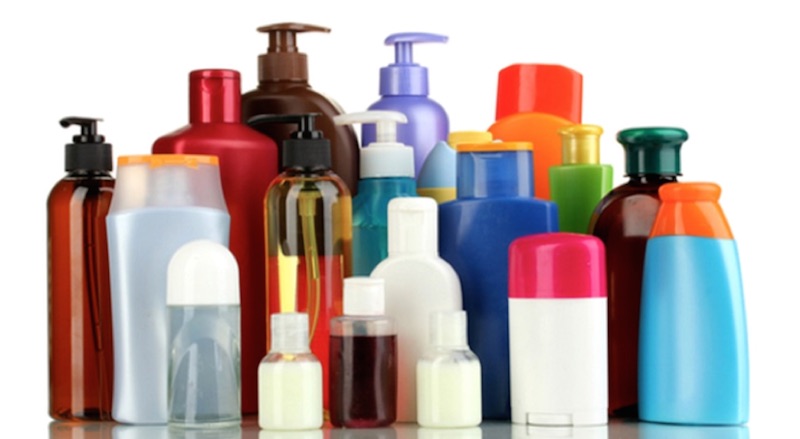10 Sources of Endocrine Disruptors and How to Avoid Them
Last updated on
Endocrine disruptors are chemicals known to interfere with development and reproduction, and they may cause serious neurological and immune system effects.
The disruptions occur because such chemicals mimic hormones in your body, including the female sex hormone estrogen, the male sex hormone androgen, and thyroid hormones. Endocrine-disrupting chemicals may block hormonal signals in your body or interfere with the way the hormones or receptors are made or controlled.1
Damage Can Show Up Decades Later
The greatest risks appear to come from exposure during prenatal or early postnatal development, which is when organs and neural systems are forming.4
Some of the effects, however, may not show up until decades later, and it’s being increasingly suggested that many adult diseases actually have fetal origins.5One of the most disturbing examples of this came from diethylstilbestrol (DES), a synthetic estrogen drug that was widely prescribed to pregnant women prior to the 1970s in order to help prevent miscarriage and promote fetal growth.
This endocrine disruptor turned out to be incredibly dangerous and caused problems with reproductive development and vaginal cancer that appeared after puberty.6And it’s not only humans that are being affected. Endocrine disruptors are found widely in contaminated water, air and food, and as such wildlife is also at risk.
10 Common Sources of Endocrine-Disrupting Chemicals
How often are you likely to be exposed to these toxic chemicals? Probably far more often than you think.
According to Thomas Zoeller, a biology professor at the University of Massachusetts Amherst who specializes in how chemicals affect the endocrine system, there are an estimated 800-1,000 endocrine-disrupting chemicals on the market.Epoch Times recently compiled 10 common sources of endocrine disruptors, as well as what you can do about them.8
1. Personal Care Products
Shampoo, conditioner, moisturizer, cosmetics, and other personal care products often contain endocrine disruptors, including (but certainly not limited to) phthalates. Phthalates are a group of “gender-bending” chemicals causing males of many species to become more female.
Another endocrine-disrupting chemical, triclosan, can even be found in certain brands of toothpaste. Switching to natural and/or homemade personal care products will help you avoid such exposures. You can also try to cut down on the number of personal care products you use every day.
2. Drinking Water
Your drinking water may be contaminated with atrazine, arsenic, and perchlorate, all of which may disrupt your endocrine system. Filtering your water, both at your tap and your shower/bath, using a high–quality water filtration system can help protect you and your family.
3. Canned Foods
In an analysis of 252 canned food brands, 78 are still using bisphenol-A (BPA) in their canned goods, even though it’s a known endocrine disruptor.10 BPA has been linked to a number of health concerns, particularly in pregnant women, fetuses and young children, but also in adults, including:
| Structural damage to your brain | Changes in gender-specific behavior and abnormal sexual behavior |
| Hyperactivity, increased aggressiveness, and impaired learning | Early puberty, stimulation of mammary gland development, disrupted reproductive cycles, ovarian dysfunction, and infertility |
| Increased fat formation and risk of obesity | Stimulation of prostate cancer cells |
| Altered immune function | Increased prostate size and decreased sperm production |
BPA coats about 75 percent of cans in North America, which means if you eat canned foods, it’s likely a major source of BPA exposure for you. Even BPA-free cans may not be safe, as they’re often coated with a similar chemical known as BPS. Ideally, buy products that come in glass bottles and jars rather than plastic or cans.
4. Conventionally Grown Produce
Pesticides, herbicides, and industrial runoff may coat your conventionally grown fruits and vegetables in endocrine-disrupting chemicals. As much as possible, buy and eat organic produce and free-range, organic foods to reduce your exposure to endocrine-disrupting pesticides and fertilizers.
5. CAFO Meat, Poultry, and Dairy Products
Animals raised on concentrated animal feeding operations (CAFOs) also typically contain antibiotics, hormones, and other industrial chemicals that may disrupt your endocrine system. Look for animal products that are free-range, organic and raised on small, local farms that avoid the use of such chemicals.
6. High-Mercury Fish
Fish contaminated with high levels of mercury and other heavy metals are problematic because such metals also disrupt hormonal balance. Shark, swordfish, king mackerel, marlin, and tilefish are among the worst offenders here, but even tuna has been found to be contaminated with dangerously high levels.
Farmed fish (the “CAFOS of the sea”) also tend to be higher in contaminants and are better off avoided. When eating seafood, smaller fish like sardines, anchovies, and herring tend to be low in contaminants and high in omega-3 fats.
7. Kitchen Products
Plastic containers and non-stick cookware common in many kitchens are another type of hazards. The plastic containers may contain BPA or other endocrine-disrupting chemicals that can leach into your food, especially if the plastic is heated. Poly and perfluoroalkyl substances (PFAS) used to create non-stick, stain-resistant, and water-repellant surfaces are also toxic and highly persistent, both in your body and in the environment.
When heated, non-stick cookware releases perfluorooctanoic acid (PFOA), linked to thyroid disease, infertility, and developmental and reproductive problems.
Healthier options include ceramic and enameled cast iron cookware, both of which are durable, easy to clean (even the toughest cooked-on foods can be wiped away after soaking it in warm water), and completely inert, which means they won’t release any harmful chemicals into your home.
8. Cleaning Products
Commercial solutions used to clean your floors, toilets, oven, windows, and more typically contain industrial chemicals that may throw your hormones out of whack. For instance, nonylphenol ethoxylates (NPEs), a common ingredient in laundry detergents and all-purpose cleaners, is banned in Europe and known to be a potent endocrine disrupter,11 causing male fish to transform into females.
9. Office Products
Ink cartridges, toner, and other solvents common in office environments are another common source of endocrine-disrupting chemicals. Handle such products with care and minimize your exposure as much as possible.
10. Cash Register Receipts

It also contains BPA, and research shows that handling this type of paper is enough to increase your bodily levels. A study in Analytical and Bioanalytical Chemistry found that of 13 thermal printing papers analyzed, 11 contained BPA.12
Holding the paper for just five seconds was enough to transfer BPA onto a person’s skin, and the amount of BPA transferred increased by about 10 times if the fingers were wet or greasy (such as if you’ve just applied lotion or eaten greasy food).
If you’re a cashier or bank teller who handles such papers often, you may want to wear gloves, especially if you’re pregnant or of child-bearing age.
Read: 19 More Tips To Reduce Chemical Exposure At Home
Source:
https://articles.mercola.com/sites/articles/archive/2015/07/15/10-common-sources-endocrine-disruptors.aspx
Some of the links I post on this site are affiliate links. If you go through them to make a purchase, I will earn a small commission (at no additional cost to you). However, note that I’m recommending these products because of their quality and that I have good experience using them, not because of the commission to be made.
Comments
Leave a Reply




































 JOIN OVER
JOIN OVER
This article is 100% correct. These are all the causes of my Fibroids. And, very well maybe the reason for me getting Endometriosis. I was so bad off that I had to go under the knife twice; the second time was 3 seperate surgeries.
And, I am surprised at how the thermo receipt works.
Thank you for sharing.